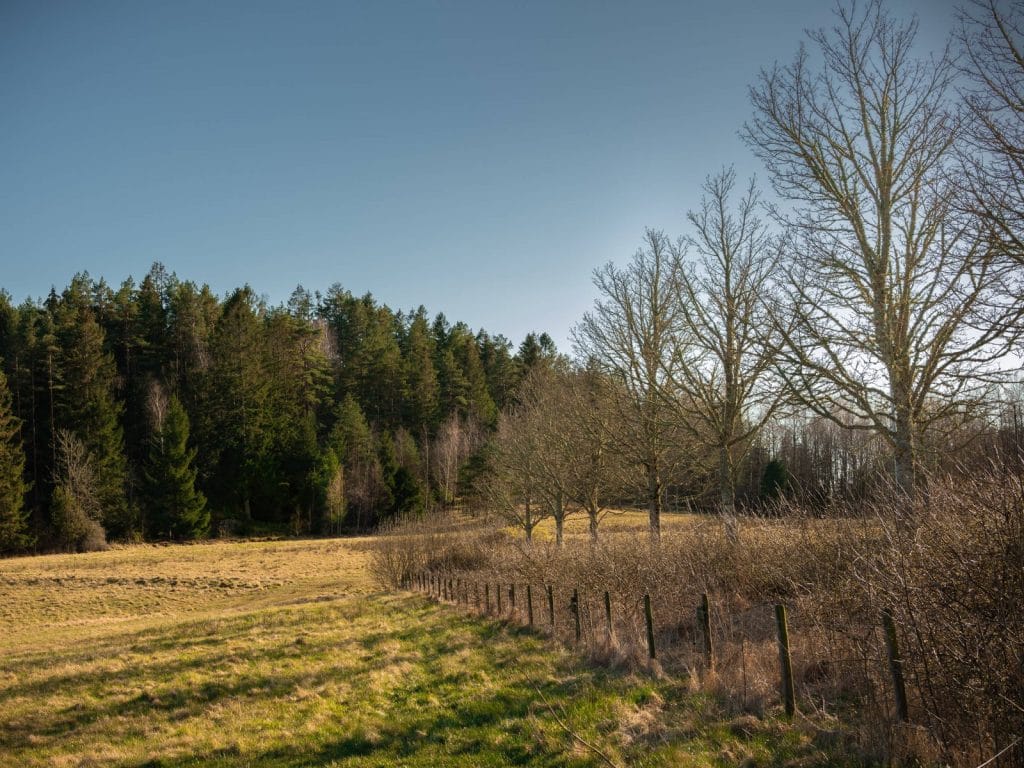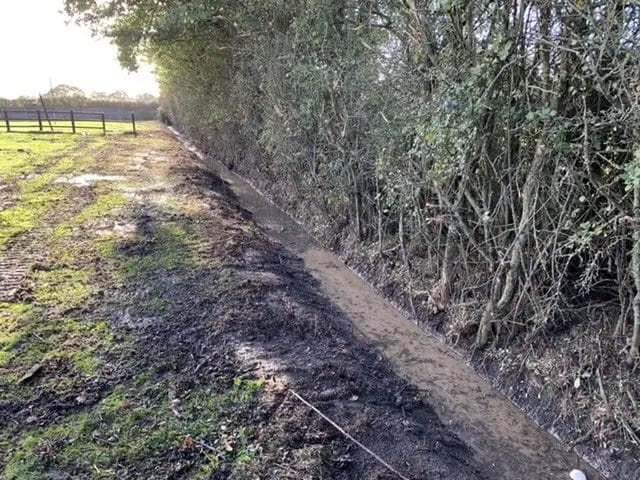
Fence Line Clearing
At Keystone Industries, we specialize in providing top-notch fence line clearing services that can enhance the appearance, safety, and functionality of your outdoor space. Our team of skilled professionals is equipped with the knowledge and tools to efficiently clear overgrown vegetation along your property’s perimeter.
Fence line clearing is the process of removing brush, vegetation, and debris along the fences on a property. It involves clearing any overgrown vegetation or unwanted plants that have encroached upon the fence line, ensuring that the fence is properly maintained and visible. check out our Land Clearing Services Page

Why is Fence Line Clearing Important?
Fence line clearing is important for several reasons. Firstly, it helps to maintain the integrity of the fence, ensuring that it remains intact and functional. Clearing away brush and overgrown vegetation also helps to improve visibility along the fence line, making it easier to identify any potential damage or weaknesses in the fence. Additionally, fence line clearing helps prevent issues such as damage caused by overgrown brush, weed or vine growth, and the accumulation of debris.
What are the Benefits of Fence Line Clearing?
Clearing fence lines offers various benefits. It helps to improve the aesthetics of the property by creating a neat and well-maintained appearance. It also promotes the overall health of the fence by preventing damage from overgrown brush and vegetation. Regular fence line clearing can help to identify and address any damage or weak points in the fence, ensuring its longevity. Additionally, clearing brush along fence lines can improve visibility and access along the property, making it easier to navigate and maintain.
How Often Should Fence Lines be Cleared?
The frequency of fence line clearing depends on several factors, including the size of the property and the rate of vegetation growth. In general, it is recommended to clear fence lines at least once a year, ideally during the spring or fall seasons when vegetation growth is typically more rampant. However, it may be necessary to clear fence lines more frequently in areas with fast-growing plants or in properties where overgrown brush poses a significant risk to the fence’s integrity.
How to Clear Fence Lines?
Clearing fence lines can be done using various tools and techniques. Here are some key steps to follow:
What Tools are Needed for Fence Line Clearing?
When it comes to fence line clearing, having the right tools is crucial. Some common tools include handheld pruners or loppers for smaller branches, a chainsaw for larger branches and tree removal, a brush cutter or a string trimmer for tackling thick vegetation, a shovel for removing any debris or unwanted plants, and a rake for collecting any leftover debris.

What is the Best Approach for Clearing Brush Along Fence Lines?
When clearing brush along fence lines, it’s best to start by removing any larger branches or trees that may pose a risk to the fence. This can be done using a chainsaw or by hiring a professional tree removal service. Next, use a brush cutter or a string trimmer to cut down any overgrown vegetation, ensuring that it is cut as close to the ground as possible. Finally, use a shovel to remove any remaining debris and rake the area clean for a neat finish.
How to Safely Remove Larger Branches Near the Fence?
Removing larger branches near the fence requires caution to ensure the safety of both the fence and the person performing the task. Hiring a professional tree removal service is recommended for removing larger branches safely. They have the expertise and equipment necessary to safely remove branches without causing damage to the fence or surrounding areas. Alternatively, if you have experience using a chainsaw, ensure you are wearing appropriate safety gear and take care not to damage the fence while cutting and removing the branches.
Common Problems with Fence Lines and How to Solve Them
While fence line clearing can help prevent many problems, certain issues may still arise. Here are some common problems and their solutions:
How to Deal with Damage Caused by Overgrown Brush on Fence Lines?
If overgrown brush has caused damage to the fence, it is essential to assess the extent of the damage. For minor damages, you can fix the fence yourself by repairing or replacing the affected sections. However, for extensive damages or if you’re unsure of the necessary repairs, it’s best to consult a professional contractor specializing in fence repair or hire a professional fencer to get the job done correctly and efficiently.
What to Do if a Fence Line is Overgrown with Weeds or Vines?
If your fence line is heavily overgrown with weeds or vines, it’s important to take immediate action to prevent further damage. Start by removing any visible weeds and vines manually. Then, consider using a brush cutter or a string trimmer to cut down the remaining vegetation. If the weeds or vines are persistent, you may need to use a herbicide or consult a professional lawn care service for effective and long-lasting control.
What are the Benefits of Using a Mulcher for Fence Line Clearing?
Using a mulcher for fence line clearing offers several benefits. A mulcher is a heavy-duty attachment that can be used with equipment like tractors or skid steers. It efficiently clears large areas of brush and vegetation, turning them into mulch that can be spread across the property or used as compost. Using a mulcher not only saves time and energy but also helps to maintain the health of the ecosystem by recycling organic material.
Tips for Maintaining Cleared Fence Lines
Once you have cleared your fence lines, it’s important to take steps to ensure that they stay clear and well-maintained. Here are some useful tips:
How to Prevent Brush from Growing Back on Fence Lines?
Preventing brush from growing back on fence lines requires ongoing maintenance. Regularly inspect the fence lines and promptly remove any new growth using appropriate tools. Additionally, applying weed control products or organic mulch along the fence line can help suppress weed growth and prevent brush from reestablishing itself.
What are the Best Practices for Keeping Fence Lines Clear in a Pasture?
In a pasture setting, keeping fence lines clear is essential for the safety of the livestock and the overall maintenance of the property. It’s important to regularly inspect the fence lines, removing any overgrown vegetation or debris that may hinder the animals’ movement or damage the fence. Additionally, consider using electric fences to prevent vegetation from encroaching upon the fence line and using livestock rotation practices to minimize brush growth in the pasture area.
How to Create an Opening in a Fence Line to Access a Cabin or Other Area?
If you need to create an opening in a fence line to access a cabin or another area on your property, it’s crucial to do it properly to maintain the integrity of the fence. Start by assessing the location and determining the most convenient spot for the opening. Use appropriate tools like a chainsaw or a handsaw to carefully cut the desired opening in the fence. Once the opening is created, consider installing a gate or a removable panel to provide controlled access while keeping the fence intact.

Oregon
Portland, Beaverton, Gresham, Hillsboro, Corbett, Cornelius, Fairview, Forest Grove, Gladstone, Happy Valley, King City, Lake Oswego, Milwaukie, Oregon City, Sherwood, Tigard, Troutdale, Tualatin, West Linn, Wilsonville, Wood Village, Aloha, Beavercreek, Boring, Cedar Mill, Clackamas, Damascus, Dunthorpe, Garden Home, Raleigh Hills, West Slope

Washington
Vancouver, Battle Ground, Camas, Washougal, Ridgefield, La Center, Yacolt, Hazel Dell, Minnehaha, Salmon Creek, Walnut Grove, Orchards.